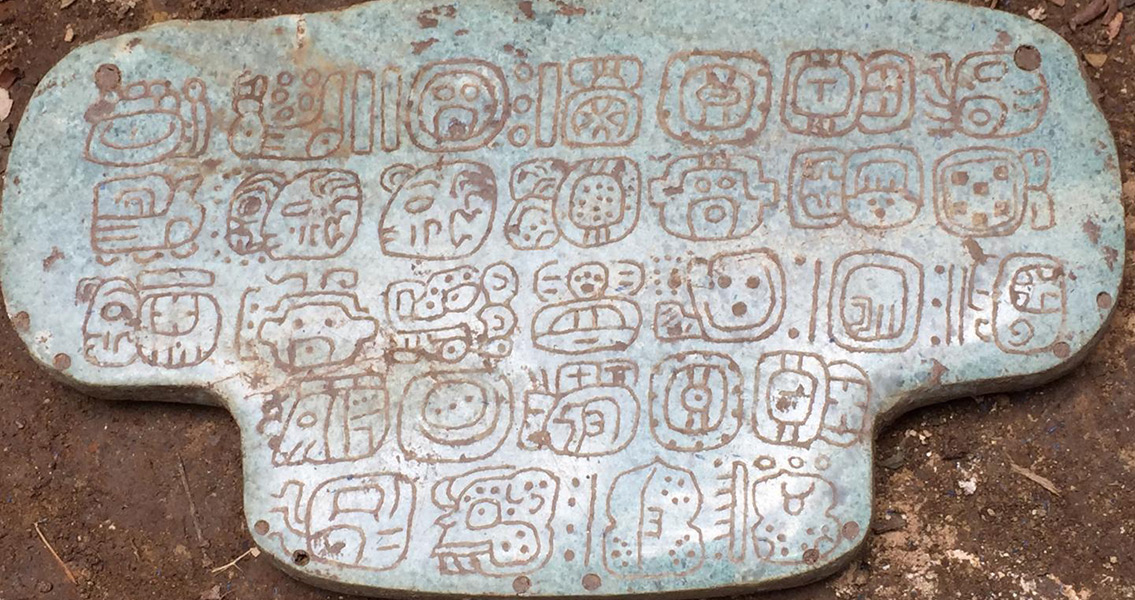<![CDATA[The mystery of a jade Maya pendant discovered in southern Belize – described as akin to “finding the Hope Diamond in Peoria instead of New York” – has ignited the imaginations of researchers worldwide. According to a newly-published paper on the subject, the discovery of the precious jewel was bizarre in that it was found far from any major population center of the Maya world. The jade pendant was unearthed in southern Belize’s Nim Li Punit, located 40 kilometers from the town of Punta Gorda. First discovered in 2015, the jade jewel is thought to have been worn on the chest of a Maya king during important religious ceremonies. It’s the second largest example of Maya jade ever found at 7.4 inches by 4.1 inches, and is made even more remarkable for having been inscribed with historical texts describing the pendant’s original owner. Nim Li Punit is located at the very edge of the region known to have been inhabited by the Maya. Indeed, it’s over 250 miles away from Chichen Itza, the Mexican site where a number of other, though smaller, pendants have been discovered. Thought to have been home to the Maya from 150 CE through 850 CE, Chichen Itza was rediscovered in 1976. The jade jewel was discovered during an excavation of a 400 CE era palace when UC San Diego archaeologist George Braswell and his team found an intact but collapsed tomb. The grave, which is thought to be about 400 years younger than the palace, contained the jade pendant along with several pieces of pottery and a large flaked stone depicting a Maya deity. There was no trace of any human remains save a handful of teeth. The fact that the priceless pendant was buried without an accompanying set of human remains has led Braswell to believe it was done so as a dedication to a Maya god. In a press release from the college, the archaeologist explains that a Maya glyph representing “wind and breath” is carved into the front; the vaguely t-shaped glyph was also mirrored in the shape of the platform where the pendant was found. Moreover, one of the pieces of pottery discovered within the tomb depicts what is likely a Maya wind god as well. Wind played an important role in Maya mythology, as it was seen as the harbinger of the monsoon season needed to grow crops. Maya kings were seen as responsible for bringing the wind and rain through ritual performances; this particular pendant was used in a ritual of this kind in 673 CE, according to the inscription left behind on its back. So why bury the pendant? One theory, Braswell says, is climate change. Maya kingdoms were disintegrating throughout the region at around 800 CE, possibly as a result of insufficient rain. This is likely to have led to the mass abandonment of population centers like Nim Li Punit. The dedication could have been a last-ditch effort to appeal to the wind god to return and begin providing the Maya the life-giving rains they so desperately needed. The research study, published in the journal Ancient Mesoamerica, can be found here]]>
Mystery of Maya Pendant’s Discovery Puzzles Researchers
